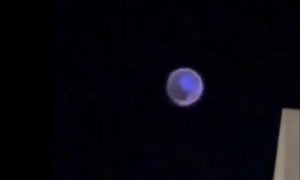
The Times Journalist Takes a Peek at Classified Ukrainian Defence Intelligence Facility, Exposing Naval Operations and Advanced Surface Drones
A secret base on the Dnipro River is hiding a new Ukrainian fleet of surface drones placed in a depot filled with explosives, which is enough to destroy the entire Russian Black Sea fleet.
This is stated in The Times report by a journalist who visited the secret facility of the Defence Intelligence of Ukraine.
Ukraine’s military intelligence service, GUR, has disclosed three types of drones, according to the report.
Drones of the General Directorate of Intelligence
The commander of the unmanned fleet with the callsign “13” said that he was blasting holes in the most modern Russian warships, sinking his last two targets near the Black Sea in Crimea on November 10, 2023.
The commander told how drones, avoiding anti-submarine nets, sneaked into the port at dawn to find the right angle of attack.
The Russians saw them and opened fire with machine guns on their low and narrow silhouettes. But the bullets missed their target as the drones accelerated.
The Russians opened fire with large-caliber weapons, but two drones reached their targets and hit the Akula and Serna class landing boats, and the third exploded in the dock. The boats sank, taking a loaded armored personnel carrier to the bottom of the Black Sea with them.
“They knew we were coming,” the DIU commander said, adding that there was nothing the Russians could do.
“The joy was incredible. It was the purpose of my life to sink a Russian ship, and we sank two at once. And as far as I know, no one has done that anywhere before. Now we have a new goal – to sink something more.”
The commander’s combat journey began in May, when the Russian Ivan Khurs reconnaissance ship was forced to limp back to port from the Bosphorus after being hit by mysterious explosions.
In July, and then in September, the ultra-modern Russian Sergey Kotov patrol ship suffered the same fate. A second time, it was damaged by drones that accidentally hit the ship as it maneuvered to evade enemy aircraft in pursuit.
According to him, all these attacks were the work of a team of DIU operators.
“These weapons are extremely effective,” the commander said. “If we only roughly imagine how much it costs to build ships like the Kotov, and crew training – it will take years to build and train a crew. Even if you list all the drones used in the attack for one, then they are thousands of times cheaper.”
Drone operators are changing naval warfare by exposing the vulnerability of enemy ships to cheap, quickly manufactured kamikaze drones.
Naval kamikaze drones are a deterrent to the Russian fleet
Other units, including the Security Service of Ukraine, used Sea Baby drones to attack the Kerch Bridge, the Admiral Makarov frigate, the oil tanker Sig, and the Olenegorsky Gornyak landing ship. They carry a larger warhead, weighing 450 kilograms.
The drones, combined with special weapons raids on the Zmiinyi (Snake) Island and into Crimea, as well as the sinking of the Moskva ship, made the Russians retreat.
The Russian fleet was forced to move from offensive to defensive actions.
Russia’s advanced naval forces, which once threatened to land in Odessa, can no longer enforce the blockade and have even been forced to retreat to the Kremlin-controlled coastline.

To protect the occupied ports, where Russia’s Black Sea Fleet installed numerous layers of protection against drones, Ukraine chose to use helicopters and fast patrol boats.
This allowed Ukraine to plan an international trade route through the Bosphorus, which includes the coasts of NATO allies Romania and Bulgaria. That also gave Ukraine a possibility of reducing Putin’s pressure on the country’s economy.
Bridget Brink, the U.S. Ambassador to Kyiv, said that after the Kremlin pulled out of the Black Sea grain agreement in the summer, Ukraine managed to pass thorough its “humanitarian corridor” more than 200 ships and seven million tons of grain, metals, and other goods.
A new generation of drones
“The Russians began to behave much more cautiously at sea. We can just take a look at their movement changes. They began to spend most of their time closer to the Crimean coast, making runs between Sevastopol, Feodosia, Kerch, Novorossiysk. They can no longer afford to travel along this route as freely as they felt before we started our work,” the commander from the DIU said.
To its left are slender grey frames of Magura V5 unmanned surface vessels, each equipped with two cameras, infrared optics, a satellite receiver and a 300 hp engine that propels the vessel through waves at 45 nautical mph. In the nose of the kayak is a 250-kilogram warhead.

To the commander’s right are the next-generation black hulls of drones equipped with heavy warheads that can expose mines in the path of unsuspecting vessels and then return to base unscathed.
Although its marine drones are fully assembled in Ukraine, it is obvious that they have gained an advantage from Western technologies.
Behind the Starlink-type satellite receiver is located, which transmits images from two cameras to a military intelligence unit with close ties to both British and American intelligence.
The 300 hp engine reaches up to 45 mph during the attack, and a cruising speed of 25 mph gives it a range of about 250 miles.

Ukraine’s successes at sea were noted by Lord Cameron of Chipping Norton, the foreign secretary, during his visit to Odesa last month.
“It is very important what the Ukrainian fleet has achieved—pushing back the Russians, opening these new sea routes,” he said. “I’m proud that Britain is playing its part.”
“13” wholeheartedly agrees with the Lord’s words. “I dream of sinking even more Russian ships, much more,” he said. “So much that they can’t swim at all. Are we capable of destroying the entire Black Sea Fleet? Yes. And we’re working on it.’
SUPPORT MILITARNYI
Even a single donation or a $1 subscription will help us contnue working and developing. Fund independent military media and have access to credible information.


 Центр ініціатив ПЖ
Центр ініціатив ПЖ 
 Vadim Kushnikov
Vadim Kushnikov 
 Андрій Тарасенко
Андрій Тарасенко 
 Юрій Юзич
Юрій Юзич 
 Віктор Шолудько
Віктор Шолудько 
 Роман Приходько
Роман Приходько 

 Андрій Харук
Андрій Харук 


 Yann
Yann 
 СПЖ "Водограй"
СПЖ "Водограй" 





